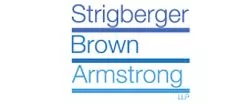In 2021, Mr. Rathbone was stopped at a drive-thru window to pick-up coffee. He was able to transfer the first coffee without issue. However, as he was transferring the second, the lid came off the upper brim, spilling coffee onto his lap. He reacted and dropped the remainder of the coffee resulting in injuries to his lap and groin.
Mr. Rathbone applied for accident benefits through his automobile insurance carrier. In addition to being submitted late, the Insurer denied the application on the basis that he was not involved in an "accident."
Section 3(1) of the SABS defines an accident as an incident in which the use and operation of an automobile directly causes injury. It involves a two-prong test: the Purpose Test and the Causation Test. The Insurer conceded that the purpose test was satisfied by use of a vehicle in a drive thru. Further, the first part of the causation test was satisfied because 'but for' the use of the vehicle, Mr. Rathbone would not have been injured.
The issue turned on the second and third parts of the causation test. Specifically, consideration of the intervening act and dominant feature.
Mr. Rathbone relied on the Ontario Superior Court decision in Dittman v. Aviva (2016)1. In that case, the applicant was also in a drive thru when she spilled hot coffee on her lap and sustained injuries. The Court found that a beverage inadvertently spilling is not outside of the "ordinary course of things" when using a drive thru. As such, the applicant's use of an automobile was a direct cause of her injuries. The decision was upheld on appeal to the Ontario Court of Appeal.2
However, Adjudicator Kaur found that Mr. Rathbone's case was distinguishable from Dittman. At an EUO, Mr. Rathbone repeatedly indicated that the coffee spilt due to the lid being improperly secured. This was not the case in Dittman, where the coffee spilling was due to the applicant's actions without an intervening act. Adjudicator Kaur found that the lid being improperly secured in this case was an intervening act that broke the chain of causation. As such, the injury was not directly caused by the use or operation of the automobile.
Further, Adjudicator Kaur agreed with the submissions of the Insurer that the vehicle was not the dominant feature of the incident. The direct cause of injuries was the improperly secured coffee lid.
We understand that the applicant is not seeking reconsideration on this decision.
This case highlights several important considerations. The LAT has embraced the Purpose and Causation tests in determining whether incidents can be defined as "accidents" according to the SABS. This analysis allows the Tribunal to assess a scenario through several layers of inquiry, including the totality of facts when making their determination. However, as we see from the case law, this inquiry can lead to uncertainty in how an Adjudicator might decide based on the facts before her.
Overall, this case reminds us that causation, specifically the intervening act and dominant feature, are evolving issues at the LAT. The case law remains relatively uncertain. Insurers should be cautious in bringing "accident"/causation cases to hearings absent being able to establish a strong foundation of facts in their favour. In particular, case law emphasizes the importance of obtaining EUOs early on in the claim process in order to obtain essential facts from the applicant, to be later relied upon in a hearing if necessary.
See Rathbone v Co-operators General Insurance Company, 2023 CanLII 58468 (ON LAT)
Footnotes
1. Dittmann v. Aviva Insurance Company of Canada, 2016 ONSC 6429.
2. Dittmann v. Aviva Insurance Company of Canada, 2017 ONCA 617.
The content of this article is intended to provide a general guide to the subject matter. Specialist advice should be sought about your specific circumstances.

